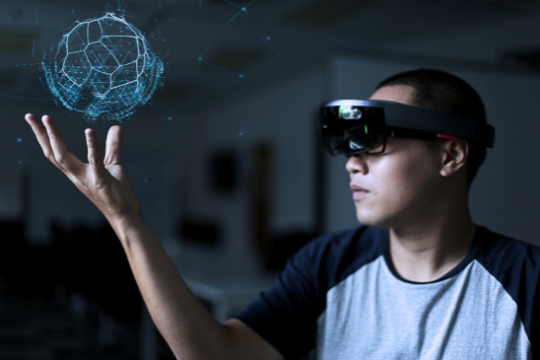 Virtual reality (VR) is a simulated environment created by computer technology. This environment can be combined with real life experiences and it has the ability to simulate physical presence in places of the virtual world. Because VR creates an immersive experience that resembles real life, many organizations are using VR as part of their training programs. This emerging technology is starting to rule various industries, and companies are starting to incorporate VR to offer more effective and memorable training. Here are five situations where virtual reality can be used for training.
Virtual reality (VR) is a simulated environment created by computer technology. This environment can be combined with real life experiences and it has the ability to simulate physical presence in places of the virtual world. Because VR creates an immersive experience that resembles real life, many organizations are using VR as part of their training programs. This emerging technology is starting to rule various industries, and companies are starting to incorporate VR to offer more effective and memorable training. Here are five situations where virtual reality can be used for training.
VR Medical Training
The healthcare sector is continuously conducting medical training for different tasks. VR can be used for such healthcare training and virtual surgical simulation. This technology is being used to make the virtual environment as close to the real world as possible. Medical students can learn how to perform surgeries and other procedures on virtual patients without putting anyone at risk of injury. They can practice these complicated maneuvers while receiving instant feedback from their mentors or teachers.
Medical VR training offers the benefits of virtual training with the realism of real-world scenarios. Because virtual reality provides an unprecedented amount of control when creating virtual environments, it allows users to create various virtual training simulations that would otherwise be possible only in the real world.
VR Military Training
As VR becomes more popular, the military is also starting to take advantage of this technology for training. Imagine a virtual environment where soldiers can safely train in an immersive virtual landscape that is otherwise just too dangerous or expensive to create in real life. At present, the United States Army has already started using virtual simulations for training and recruiting new members. Some virtual reality companies have also done military training including virtual reality training for the US Army.
Military VR training offers numerous benefits to all parties involved. Soldiers can receive necessary training before they are deployed, and virtual reality allows them to rehearse dangerous combat situations more safely and efficiently than in real life. Virtual environment technology also helps improve soldiers’ overall situational awareness.
VR Sports Training
Virtual reality is also used in sports training. With virtual coaching, VR can help athletes train and improve their specific skills more efficiently than if they were to practice these skills on a real field or court. Coaches are able to observe the athlete’s movements when practicing techniques to make sure that they have proper form and technique. These virtual coaches can also conduct training to help athletes improve their performance and hone their skills in areas such as stamina, speed or power.
Virtual reality helps sports players prepare for real life competition by allowing them to practice more efficiently. It also promotes team building in the form of virtual practice sessions that give teammates a chance to interact and work together in a simulated world environment.
VR Employee Training
Companies are also using virtual reality for employee training. VR employee training offers several benefits over traditional training, and it can help the employees learn faster with virtual reality training tools.
Employee VR training uses virtual technology to improve employees’ overall job performance by providing them with virtual training environments that resemble the real world job environment. Virtual reality is also used to support teamwork and collaboration among employees, which can help them work together more effectively in the future.
Virtual reality employee training can be tailored to the specific needs of a company, helping employees learn faster about different aspects of their job role or even helping them learn about new job roles. Employee virtual reality training can be more effective in teaching employees because VR technology provides an immersive environment that is closer to the real work environment than any other type of training available today.
VR Automotive Training
Automakers are also using virtual reality for automotive training or VR crash testing . The virtual experience allows driver trainees to gain experience before they move on to the real world where crash tests are conducted in real-time. The virtual reality driver training helps drivers become more aware of risks and how intense situations can help them learn to respond effectively when faced with a dangerous situation.
Sunvera Software develops next-level software applications from start-to-finish. Schedule a free 30-minute call with us to discuss your business, or you can give us a call at (949) 284-6300.

